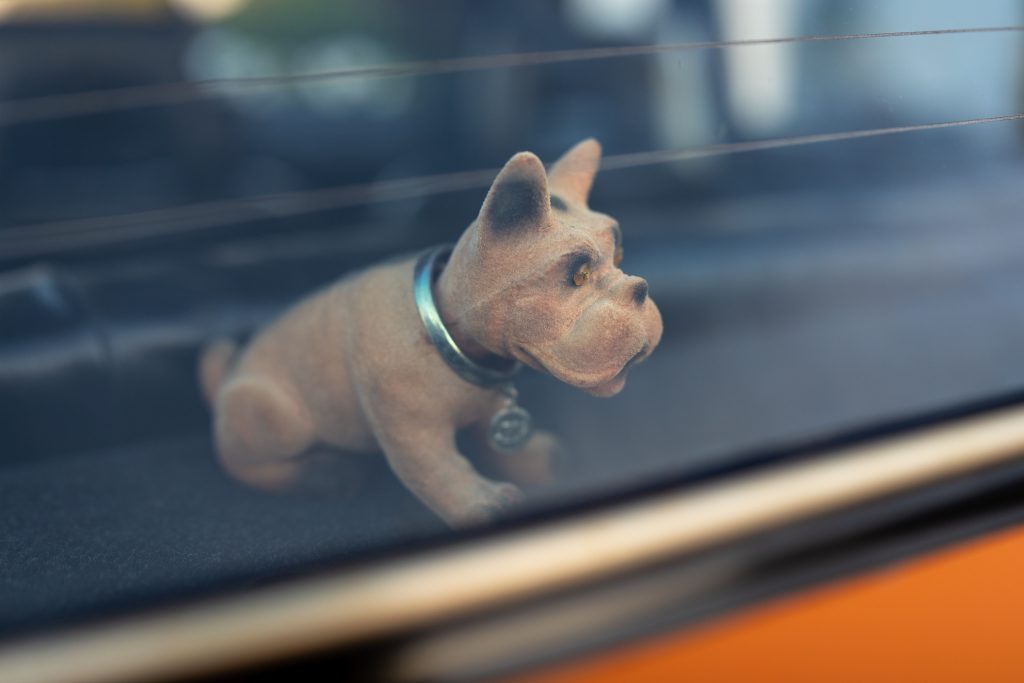To many people, the nodding dog is a very British institution. A kitsch car accessory from the 1970s, perched on the dashboard of a Ford Capri or the rear shelf of a Vauxhall Viva. This sense of Britishness was cemented when insurance company Churchill made ‘Churchie’ the nodding bulldog – yes, that was his name – the face of its brand. Who can forget the television advert with the animatronic dog peering through the back window of a car? Vic Reeves posed the questions, Martin Clunes the narration, with Bob Mortimer starring as Churchie. Oh yes!
But while the canine with springy neck muscles does stem from the 1970s, its roots go back much further, to 18th century Germany. What we know as the nodding dog is actually called the ‘Wackeldackel’, or dachshund bobblehead. The dachshund has long been a popular German symbol; the first verifiable reference to the breed dates back to September 1723, with its inclusion in Johann Friedrich von Flemming’s book Der vollkommene teutsche Jäger (The Complete German Hunter). The first Wackeldackels were created in the 1970s and soon became a familiar sight in the back of saloon cars across Germany. If you fancy one for your W116 or W123, Mercedes-Benz will be all too happy to relieve you of €28 plus shipping costs. It’s worth it for the brass collar. Oh yes!

The Wackeldackel enjoyed a renaissance in 1998 when it appeared in a German advertisement for the oil company Aral. A spokesperson for the BP Aral group said: “After this spot with heavy metal music in a Ford Granada, even cat lovers suddenly wanted the dachshund.” Available from petrol station counters and via the Aral website, around 500,000 nodding dogs were sold in eight months, which just goes to prove that you can teach an old marketing executive new tricks. Oh yes!
Twenty-two years later, the Wackeldackel entered the digital age when it became the subject of a Google Doodle, marking the first reference to the dachshund in 1723. Lead engineer David Lu said, “he wanted all non-German speakers to appreciate the word Wackeldackel [which is] way more description than ‘German Wiener dog Bobblehead’”. Oh yes!

Not everyone is a fan of the Wackeldackel. In 2002, Kilian Doyle, writing for The Irish Times, called for an automatic ban from holding a driving licence for anyone daring to place an ornament in a car. We quote: “This pathetic penchant for vehicular adornment is an illogical progression from the solo head-nodding shelf ornament of the 1970s. Oh, how we scoffed then at the macho Ford Capri driver and his catatonically-rocking bulldog”. Harsh? Oh yes!
Today, Churchill has sent Churchie packing, replacing him with a CGI upstart, complete with skateboard and a more laidback vibe. The advert is worth watching for the sight of the Chrysler 180 with a vinyl roof. Oh yes!
More than just a kitsch car accessory, the Wackeldackel is an important symbol of German culture and an essential upgrade for an Audi, BMW or Mercedes-Benz from the 1970s. Oh… you know the rest.
Read more
Old car accessories we miss (and some we don’t)
Top Ten Classic Car Accessories
7 rapid executive cars that gave Germany a fright









